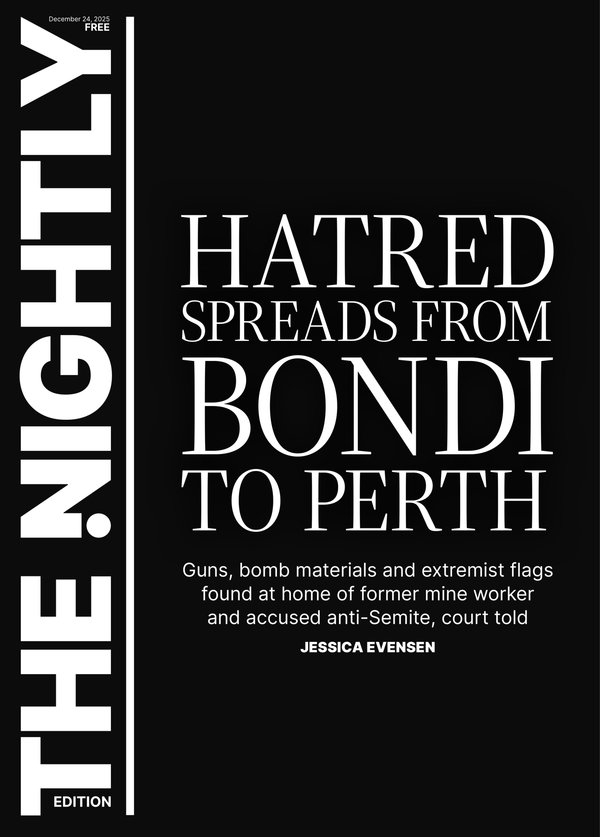JACKSON HEWETT: Why Australian miners sank on China’s $2.1 trillion stimulus

What if you threw a $2.1 trillion party and nobody came?
That’s certainly the dread felt by resources companies after the latest round of stimulus by Beijing fell completely flat.
Iron ore names were heavily hit: Fortescue dropped more than 5 per cent on Monday, and BHP and Rio Tinto fell by more than 3 per cent.
Sign up to The Nightly's newsletters.
Get the first look at the digital newspaper, curated daily stories and breaking headlines delivered to your inbox.
By continuing you agree to our Terms and Privacy Policy.The view from the trading floors is that China keeps announcing stimulus, rather than delivering it.
That’s only half true.
That $2.1tr is not to be sniffed at. But it’s going somewhere of little value to our miners — at least in the short term.
Investors were hoping for the kind of big-ticket infrastructure build that cranks up China’s steel mills and sends the iron ore price skyrocketing. Instead, they got an unexciting bailout for China’s highly indebted local governments.
So nothing of value for miners in the short term, which is all the market cares about.
But it does do something quite important in the long term, which is all Beijing cares about. It sets up local areas for economic growth in a fast-changing world, and Australia should be paying attention.
China has been following the mantra of reformist leader Deng Xiaoping: “secure our position; cope with affairs calmly; hide our capacities and bide our time; keep a low profile and never claim leadership.”
Beijing has not been standing still waiting for the world to set the agenda. Well before Donald Trump the First put tariffs on Chinese goods, Beijing has been pursuing economic independence.
It’s why they are so advanced in solar, wind and electric vehicles says Huw McKay, a former long-time economist with BHP and who is now with ANU’s Crawford School of Public Policy.
“Why be dependent on (oil) if you can power your transport differently? China worked that out 25 years ago,” he says. “That’s why they have a great energy industry today. These things appear to emerge overnight, but they’re actually a long time coming.”
China’s obsession with energy security has made them the price leader in solar panels, wind turbines and batteries. And according to McKay, they blow Western EVs out of the water in terms of quality.
Don’t just take McKay’s word for it. The CEO of Ford drives a Xiaomi EV sportscar and recently admitted Chinese EVs are an “existential threat”. Over in Germany, where Volkswagen is closing plants, a senior automotive executive lamented that in order to compete, they have to ‘unlearn’ 100 years of manufacturing.
What does that have to do with local government debt?
McKay says local governments are engines of innovation in a way Western countries can only dream of.
“China is really good at building things. They have the engineering workforce and the construction workforce. That is a superpower in this current environment. If there’s an opportunity there, China just gobbles it up before anyone else has even started to do their feasibility study.
“Part of it comes back to bureaucracy. Local government officials want stuff to happen during their current tenure, and if they’re only in place for two years, you sure as hell better build whatever it is within two years, because they want the credit.”
So by unshackling provincial governments from debt, Beijing will help them supercharge future activity.
Iron ore and coal in the firing line
One of those areas of local innovation will likely be in steel production and McKay says an overlooked recent announcement sufficiency was the creation of central group to coordinate scrap recycling.
Hundreds of millions of tonnes of scrap iron from China’s first wave of infrastructure investment 30 years ago are about to become obsolete. A report by McKinsey suggested scrap could make up as much as 30 per cent of steel production by 2030, significantly replacing demand for Australian iron ore.
“In the context of an important commodity for Australia, you have a cornerstone plan for the steel industry and China’s best opportunity for reducing its dependence on imported iron ore is to increase the scrap proportion of feed stock in its steel making,” it said.
“China is going to be generating huge amounts of scrap over the coming decades as the first wave of its economic boom comes back as end-of-life capital stock and is available for recycling. So the scrap is a geo-strategic resource.”
That’s bad news for our iron ore miners. And it turns out it’s bad news for our coal miners too. Steel made from scrap doesn’t require metallurgical coal. It also has a much lower carbon footprint.
Stimulus may still be coming
While this round of stimulus may not have offered much to Australia, it doesn’t mean there’s not more to come.
McKay says China has been “keeping its powder dry” on stimulus spending for quite some time now.
Beijing has indicated there are more plans in the works, but it’s likely that won’t happen until they know what Trump plans to do.
Australian miners might have to follow Deng Xiaoping’s advice and “bide their time”.

